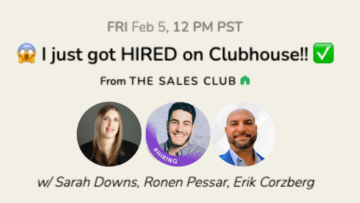Is your resume going in the black hole when you apply online?
Nearly 75% of resumes are never seen by human eyes when submitted through the applicant tracking system for online job applications. Why? Formatting and more.
The Applicant Tracking System (ATS) is an automated resume screener and there are over 200 ATS systems available today. Resumes go through a parser and are read by a bot before a human. The bot assigns a mathematical score to your resume against the job description as it reads entire phrases and not just keywords. The terminology for the technology that reads phrases in your resume with the words before and after the keywords is called contextualization.
Your score is then validated and is moved on to be viewed by human eyes — or it goes into the black hole because it did not match at a high enough percentage, didn’t make it through the “throw out” qualification questions, or could not be read due to resume format selected. This is extremely frustrating for those who are qualified for positions but can’t get past the bots.
You must have a solid base resume and then customize the keywords to match each and every job application. If you don’t know how to do this, there are workshops with the Great Careers Network that you can attend on occasion.
Here are some other tips for the ATS “deconstructed resume”, which is different than your “pretty” resume that you snail mail, email, or hand to someone.
Tip #1: Customize your “future-forward” resume with key titles and keywords for the position you are applying to.
Tip #2: Remove all images, graphics, logos, or pictures, as they may not be readable by the ATS.
Tip #3: Use a font no less than 11 point and Arial is recommended for the ATS resume.
Tip #4: Don’t hide keywords in white text and try to cheat the system, as they come out black on the other end.
Tip #5: Remove irrelevant positions from your resume.
Tip #6: Beware of special characters – no arrows or checkmarks; solid black bullets seem to work for most ATS systems.
Tip #7: Avoid any kind of shading, tables, lines that cross the entire page, fancy borders, and section breaks on the ATS resume.
Tip #8: Check for spelling errors—the ATS may miss keywords if they are misspelled.
Tip #9: Place your contact information at the top and not in the header and make sure you have included your customized LinkedIn URL.
Tip #10: Add the dates of your employment after your employer, city, state at the far right of the page using xx/xx – xx/xx with month and year and a slash in between and be consistent with using en dashes (rather than em dashes) throughout your resume.
Tip #11: Write your resume in a Word document. At the end of an online application, upload the “pretty resume” in Word in a .doc or .docx unless requested otherwise. PDFs can be readable or non-readable images. You don’t want to take a picture with your phone or scan it in your printer. Instead, click file, print, save as PDF and it will be a readable PDF. Uploading a deconstructed non-formatted resume is preferred to copying and pasting your resume into text boxes. That means you will probably need to have two resumes – one pretty resume for humans and another that can be read by the bots.
Tip #12: Do not upload your resume multiple times. This may hurt, rather than help and raise red flags.
Tip #13: Mirror the language in the job description on your ATS resume to showcase your expertise; use the niche terminology.
Tip #14: Only type typical resume sections and use the sections of LinkedIn as your guideline.
Tip #15: Quantify your accomplishments and achievements in bullet points in your work experience rather than stating your responsibilities.
Tip # 16: Use jargon and buzzwords from your industry so the applicant tracking system tools that index and crawl submissions pick up these key phrases and terms.
Tip #17: Use keyword and text analyzers with your job description so you have a helping hand with technology for data-driven decision-making.
Tip #18: Develop two resumes: pretty formatted and deconstructed for ATS.
Tip #19: Include your social media handles on your resume to show you are current and relevant with your technology skills.
NEXT STEPS
- Subscribe to my newsletter on LinkedIn™ for bright ideas on how to manage your career.
- If you need a resume or LinkedIn™ profile to get you to your next step, book a call to chat!
- Join as a member at https://greatcareers.org/membership of the #1 business networking association on the Philadelphia Business Journal’s Book of Lists four years in a row!
- To support our charity at KeepOnSharing.com use the referral code Career
- Follow #GreatCareersPHL
AUTHOR BIO
Lynne M. Williams is the Executive Director of the Great Careers Network, a volunteer-run 501(c)3 nonprofit organization that provides career development and networking connections for 1) job seekers in career transition, including veterans, and 2) employed and self-employed for career management.
Aside from writing keyword-focused content for ATS resumes and LinkedIn™ profiles, Lynne is currently writing her doctoral dissertation on LinkedIn™ for Job Seekers. She is a contributing author on “Applying to Positions” in Find Your Fit: A Practical Guide to Landing the Job You Love, along with the late Dick Bolles, the author of What Color is Your Parachute?, and is also a speaker on career topics.



